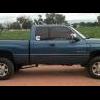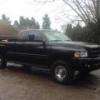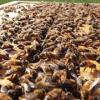- Replies 61
- Views 12.3k
- Created
- Last Reply
Top Posters In This Topic
-
 TFaoro 21 posts
TFaoro 21 posts -
 mulcher812 10 posts
mulcher812 10 posts -
 hex0rz 9 posts
hex0rz 9 posts -
 Mopar1973Man 4 posts
Mopar1973Man 4 posts


I just want to get everyone's thoughts on tapping my injection pump. From what I've read, if the pump is going to fail from being re-manufactured improperly it will fail within the first month or couple thousand miles. I've had my industrial injection on since Christmas and have had Zero issues. I have a stealth plate, but they can still see the pricked wire when it's torn apart, and they can see the top bolts have been removed ( Probably voiding the warranty ). I'll probably be putting my he351cw on in the beginning of June and I think the comp, 100's and turbo would match really well. Let me know what your thoughts are! Thanks in advance